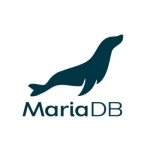
Head of Data Center at a tech company with 51-200 employees
MySQL is undoubtedly one of the best open-source database products available. It's fast, easy to use and very reliable.
What is most valuable?
MySQL has established itself not only as the most popular open-source database, but the most reliable one as well. In my more than six years as system administrator managing various websites and web servers, MySQL has been our server of choice for web applications. It wouldn't be acquired by Oracle if it did not see it that way too.What I like most about MySQL is that it's relatively easy to install, fast, lightweight and reliable. It's available for both Windows and Linux, making it a very good alternative to other open source databases back then, which only runs on Linux. PostgreSQL for example did not have a Windows installer before. This made it very difficult to adopt it for mixed-OS environments and that is why we use MySQL.
What needs improvement?
Back in the days, our only gripe about MySQL was that it was a purely command-line based system. We don't really see it as disadvantage though, as it allowed it to be fast and very reliable. This has been addressed through the years with graphical management systems for MySQL. MySQL is a highly recommended product. I give it five stars as it really gets the job done without much of a hassle. Being available for the many platforms also makes it a very compelling choice for mixed-OS environments, as data migration can just be as easy as backing-up and restoring on another server even on different operating systems.
What other advice do I have?
Just be ready though to work at the command line should you wish to use MySQL in its free form. It may not be the most intuitive user interfaces available, but it also makes MySQL a simple yet very reliable database for most people's needs.
Disclosure: I am a real user, and this review is based on my own experience and opinions.
System Analyst and Team Lead at a tech services company with 11-50 employees
Has good tech support, an easy setup and is stable and scalable
Pros and Cons
- "For sure, the solution is very stable."
- "The licensing of the solution is on the expensive side."
What is our primary use case?
We are currently using the 6.8 version and, prior to this, used the 5.3. I use the updated versions.
What needs improvement?
The licensing of the solution is on the expensive side.
For how long have I used the solution?
I have been using MySQL since the very beginning, back in 2009.
What do I think about the stability of the solution?
For sure, the solution is very stable.
What do I think about the scalability of the solution?
The solution is scalable. We have plans to increase the number of users.
How are customer service and support?
The technical support is fine.
How was the initial setup?
The initial setup is straightforward and very simple.
What about the implementation team?
Installation can be done on one's own.
The entire system is simple to maintain, as it is not very big, and this can be done by one person.
What's my experience with pricing, setup cost, and licensing?
The price of the licensing should be cheaper.
We pay a yearly subscription fee.
What other advice do I have?
The solution is good for applications of small scope or for IT. It is sufficient to satisfy the needs of those with limited resources.
Oracle is the main product in my organization.
There are 60 or 70 people making use of the solution in my organization.
I would definitely recommend the solution to others. It is good for any solution.
I rate MySQL as a nine out of ten.
Which deployment model are you using for this solution?
On-premises
Disclosure: I am a real user, and this review is based on my own experience and opinions.
Buyer's Guide
MySQL
April 2025
Learn what your peers think about MySQL. Get advice and tips from experienced pros sharing their opinions. Updated: April 2025.
849,190 professionals have used our research since 2012.
Team Leader Presales at a comms service provider with 51-200 employees
It's reliable and simple to set up, but it could be more scalable.
Pros and Cons
- "The fact that it is free is what appeals to me the most."
- "Scalability could be improved."
What is our primary use case?
We use MySQL to store data for our customers, in the database. It is a service-related application. Also to configure the data.
What is most valuable?
The fact that it is free is what appeals to me the most.
What needs improvement?
Scalability could be improved.
For how long have I used the solution?
We use MySQL, which is a component of Oracle but operates as a separate database.
We have been using MySQL for more than ten years.
We are not using the most recent version, but rather one that has been tested with our applications.
We don't always use the latest version.
What do I think about the stability of the solution?
MySQL is a stable product.
What do I think about the scalability of the solution?
It is very scalable. There are third-party solutions to assist with scaling but that may cost money, or it is available in the Commercial edition of MySQL.
Which solution did I use previously and why did I switch?
We are primarily interested in Red Hat technology. As a result, we have primarily worked with Red Hat products.
This virtualization is built into Red Hat Hyperconverged Infrastructure.
We use both Red Hat Enterprise Linux, and Red Hat Hyperconverged Infrastructure.
How was the initial setup?
The installation is straightforward.
What's my experience with pricing, setup cost, and licensing?
We are using the free community edition of MySQL.
What other advice do I have?
Definitely, I would recommend this solution to others.
I would rate MySQL a seven out of ten.
Which deployment model are you using for this solution?
On-premises
Disclosure: I am a real user, and this review is based on my own experience and opinions.
Systems Administrator at Nubity Inc. at a tech services company
Think about the size of the database
What is most valuable?
Easy:
- Installation
- Customization
- Use
How has it helped my organization?
Data is:
- More ordered
- Reliable
- Available in time and form
What needs improvement?
Scalability: In large databases, they become slow.
For how long have I used the solution?
12 years.
What do I think about the stability of the solution?
No.
What do I think about the scalability of the solution?
Yes. In large databases, response times are high.
How are customer service and technical support?
10 out of 10.
Which solution did I use previously and why did I switch?
We used this solution, but changed for another because the database was very large.
How was the initial setup?
Configuration was easy and with much support material.
Which other solutions did I evaluate?
No.
What other advice do I have?
Let them think about the size of the database.
Disclosure: I am a real user, and this review is based on my own experience and opinions.
Junior Technician Intern at a tech services company with 501-1,000 employees
The privileges and command line features are the most valuable to me. But, you do need to have experience with SQL to use it.
What is most valuable?
- Privileges
- Command line
How has it helped my organization?
I don't have any as this was my first time using it.
What needs improvement?
I think it is where it needs to be. MySql PaaS. But, you do need to have experience with SQL to use it.
For how long have I used the solution?
I've used it for 12 months.
What was my experience with deployment of the solution?
There were no issues deploying it.
What do I think about the stability of the solution?
It has been perfectly stable for us.
What do I think about the scalability of the solution?
We've been able to scale it without issue.
How are customer service and technical support?
Customer Service:
4/10
Technical Support:7/10
Which solution did I use previously and why did I switch?
MS Access. It wasn't compatible with my project.
How was the initial setup?
It was a straightforward set-up.
What about the implementation team?
We used an in-house team.
Which other solutions did I evaluate?
We also looked at Microsoft SQL Server.
What other advice do I have?
Experience with SQL is vital. It is simple to learn and use.
Disclosure: I am a real user, and this review is based on my own experience and opinions.
Developer at a tech company with 51-200 employees
MySQL is the most popular Open Source Data Base Management System, developed and supported by Oracle Corporation.
Valuable Features:
1) It is freely available under the terms of GNU General Public License.2) MySQL works seamless on various platforms and environments.3) It is mainly used in Client/Server environment and it can be embedded in standalone applications.
4) Support SQL standards, and also provide Multi-thread environment.5) Offers high performance due to its unique storage engine architecture as well as it's core written in powerful languages such as C and C++.
Room for Improvement:
1) Does not provide good development and debugging tools, so it’s cumbersome to write large SQL statements.2) MySQL uses temporary tables to execute queries, so it consumes more space.3) MySQL is missing some RDBMS features like stored procedures, foreign keys, transaction, rollback, and subselect. And it also does't support triggers.It is widely used in web applications, and several software stacks includes MySQL as a Data Base Management System like (WAMP, XAMPP) considering its flexibility and simplicity.
Other Advice:
And if some one is looking for Database which performs simple processes like storing and displaying data only, then MySQL is the right choice.
Disclosure: I am a real user, and this review is based on my own experience and opinions.
Information Technology Technician at a tech vendor with 51-200 employees
Since it has many integrations to web applications, it is very easy to install and deploy
What is our primary use case?
We use MySQL and MariaDB for most part of our mission critical applications
This as it is so simple to integrate with web applications, and other well known applications.
How has it helped my organization?
Since it has many integrations to web applications, it is very easy to install and deploy open source web applications.
What is most valuable?
How it uses clustering.
The API's to PHP, ruby, perl, java, python, and many more high level programming languages makes it easy for us to deploy new features fast.
What needs improvement?
How to scale out with shard clusters.
The way how to handle replications needs to be improved, as we noticed that there are some performance drop of (using only one core for example)
For how long have I used the solution?
More than five years.
What do I think about the stability of the solution?
No issues.
What do I think about the scalability of the solution?
Yes, the binary log replication process in a cluster environment has issues processing data as fast as it arrives.
How are customer service and technical support?
Customer Service:
A 10 out of 10.
Technical Support:
A 10 out of 10.
Which solution did I use previously and why did I switch?
We have been using many different types of databases, and will most likely use this one for part of our systems, as it is has so much integration.
How was the initial setup?
The initial setup was easy.
What about the implementation team?
We implemented it in-house.
What was our ROI?
Free.
What's my experience with pricing, setup cost, and licensing?
Be sure to take backups of the solution, as this will check that the blocks are okay.
We decided to use "DB Protection for MySQL" as it has options to perform block level incremental forever, and integrates well with Spectrum Protect.
Which other solutions did I evaluate?
Yes, we checked MongoDB, PostgreSQL and MariaDB.
Disclosure: I am a real user, and this review is based on my own experience and opinions.
Intern at a tech vendor with 1,001-5,000 employees
It is used for many projects and easy to access. Needs to get more solid for my company to rely on it.
What is most valuable?
It is Open Source and easy to access.
How has it helped my organization?
My company does not use MySQL. However, it is often used at universities and is suitable for beginners. It is used for many projects.
What needs improvement?
From the perspective of the company, you can count on reliable Microsoft SQL or Oracle. If MySQL gets solid, it will be a good solution.
For how long have I used the solution?
I have used this solution for around two to three years.
What do I think about the stability of the solution?
There were no stability issues.
What do I think about the scalability of the solution?
There were no scalability issues.
How are customer service and technical support?
There does not seem to be any technical support for MySQL.
Which solution did I use previously and why did I switch?
I have used MS SQL and Oracle. However, now I have no money and am using MySQL.
How was the initial setup?
Encoding problems were always complicated, but nothing else.
What's my experience with pricing, setup cost, and licensing?
If you have money, it would be better to use Oracle.
Which other solutions did I evaluate?
I thought about other Open Sources, but I chose MySQL, which I have already used.
What other advice do I have?
MySQL is a good choice for startups and beginners.
Disclosure: I am a real user, and this review is based on my own experience and opinions.
Buyer's Guide
Download our free MySQL Report and get advice and tips from experienced pros
sharing their opinions.
Updated: April 2025
Popular Comparisons
MariaDB
PostgreSQL
Firebird SQL
Faiss
InfluxDB
OpenSearch
Milvus
SQLite
EDB Postgres Advanced Server
Percona Server
YugabyteDB
Oracle MySQL Cloud Service
Buyer's Guide
Download our free MySQL Report and get advice and tips from experienced pros
sharing their opinions.
Quick Links
Learn More: Questions:
- Which solution do you recommend for embedding reporting? Why?
- Did you switch from a different solution to MySQL? Can you list a few pros and cons for making the move?
- Why are MySQL connections encrypted and what is the biggest benefit of this?
- Considering that there is a free version of MySQL, would you invest in one of the paid editions?
- What is one thing you would improve with MySQL?
- How does MySQL compare with Firebird SQL?
- When evaluating Open Source Databases, what aspect do you think is the most important to look for?
- Did you switch from a different solution to MySQL? Can you list a few pros and cons for making the move?
- Which database is the best for session cashing?
- Why is Open Source Databases important for companies?















MySQL is platform independent and can be run in mixed OS platform like windows, linux, ubuntu etc. It gives compatibility even over different OS during backup and restore. Data can be backed up from one OS and can be restored on other OS.